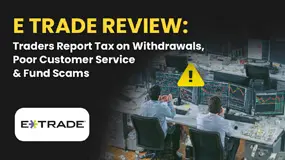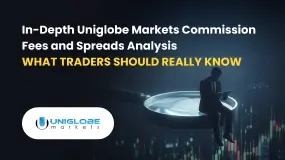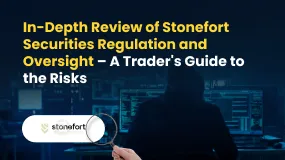简体中文
繁體中文
English
Pусский
日本語
ภาษาไทย
Tiếng Việt
Bahasa Indonesia
Español
हिन्दी
Filippiiniläinen
Français
Deutsch
Português
Türkçe
한국어
العربية
Will the Euro and US Dollar Reach Parity in 2025?
Abstract:Euro-dollar parity sparks debate again as 2025 approaches, with multiple factors shaping the exchange rate outlook.

Since its introduction in 1999, the exchange rate between the euro and the US dollar has been one of the focal points of global financial markets. In the past two decades, the euro and the dollar have only reached parity (1:1) on a few occasions. The most recent instance occurred in 2022, when Russias full-scale invasion of Ukraine triggered an energy crisis in Europe, heightening fears of a recession in the eurozone and pushing the exchange rate to the psychological key level of 1:1. Recent market volatility has reignited discussions about the potential return of euro-dollar parity. The long-term trend indicates that the euro once peaked at $1.60, but under the pressure of energy crises and increasing global economic uncertainty, the exchange rate has remained under downward pressure.

The possibility of the euro and the dollar reaching parity again in 2025 is widely discussed, with many analysts suggesting it is far from impossible. First, the eurozone‘s economic growth lags significantly behind that of the United States, setting the stage for potential exchange rate volatility. Major eurozone economies like Germany and France have faced structural challenges in recent years, including weak manufacturing sectors and insufficient consumer demand. In contrast, the United States has maintained economic resilience through strong consumer spending and corporate profits. Additionally, the eurozone’s interest rates have long been lower than those in the US. The Federal Reserves commitment to fighting inflation has kept US benchmark rates high, further widening the euro-dollar interest rate differential and drawing capital toward dollar-denominated assets.
On the geopolitical front, factors such as potential US tariffs on EU goods and political uncertainty within certain eurozone countries have undermined confidence in euro-denominated assets. As a result, from the perspectives of economic fundamentals and market expectations, the likelihood of the euro falling to parity with the dollar in 2025 is relatively high.

The future trajectory of the euro will not be dictated solely by economic growth and monetary policy; external factors will play a pivotal role in 2025. First, global geopolitical developments will directly impact exchange rates. Any international conflict or changes in trade policy could lead to sharp market sentiment swings, influencing the short-term euro-dollar exchange rate. Additionally, inflation levels and energy price volatility will be crucial variables. If energy prices rise again due to supply chain disruptions, the eurozone, which relies heavily on imported energy, could face greater economic headwinds. Furthermore, market psychology and speculative activities cannot be overlooked. Parity represents a psychologically significant level that could trigger substantial options trading or speculative activities, amplifying exchange rate volatility.
Meanwhile, shifts in the euro-dollar exchange rate will have spillover effects on regional economies. A weaker euro may enhance export competitiveness, but rising import costs could drive inflation higher, impacting consumer confidence. Thus, the euros path to 2025 remains fraught with uncertainty, shaped by a complex interplay of factors both within and beyond the eurozone.
Disclaimer:
The views in this article only represent the author's personal views, and do not constitute investment advice on this platform. This platform does not guarantee the accuracy, completeness and timeliness of the information in the article, and will not be liable for any loss caused by the use of or reliance on the information in the article.
Read more

E TRADE Review: Traders Report Tax on Withdrawals, Poor Customer Service & Fund Scams
Has your E Trade forex trading account been charged a withholding tax fee? Did your account get blocked because of multiple deposits? Did you have to constantly call the officials to unblock your account? Failed to open a premium savings account despite submitting multiple documents? Is fund transfer too much of a hassle at E Trade? Did you find the E Trade customer support service not helpful? In this E Trade review article, we have shared certain complaints. Take a look!

mBank Exposed: Top Reasons Why Customers are Giving Thumbs Down to This Bank
Do you find mBank services too slow or unresponsive? Do you find your account getting blocked? Failing to access your account online due to several systemic glitches? Can’t perform the transactions on the mBank app? Do you also witness inappropriate stop-level trade execution by the financial services provider? You are not alone! Frustrated by these unfortunate circumstances, many of its clients have shared negative mBank reviews online. In this article, we have shared some of the reviews. Read on!

In-Depth Uniglobe Markets Commission Fees and Spreads Analysis – What Traders Should Really Know
For experienced traders, the cost of execution is a critical factor in broker selection. Low spreads, fair commissions, and transparent pricing can be the difference between a profitable and a losing strategy over the long term. This has led many to scrutinize the offerings of brokers like Uniglobe Markets, which presents a tiered account structure promising competitive conditions. However, a professional evaluation demands more than a surface-level look at marketing claims. It requires a deep, data-driven analysis of the real trading costs, set against the backdrop of the broker's operational integrity and safety. This comprehensive Uniglobe Markets commission fees and spreads analysis will deconstruct the broker's pricing model, examining its account types, typical spreads, commission policies, and potential ancillary costs. Using data primarily sourced from the global broker inquiry platform WikiFX, we will provide a clear-eyed view of the Uniglobe Markets spreads commissions prici

In-Depth Review of Stonefort Securities Regulation and Oversight – A Trader's Guide to the Risks
For experienced traders, the process of selecting a new broker transcends a simple comparison of spreads and leverage. It is a meticulous due diligence exercise where the integrity of the broker's regulatory framework is paramount. Stonefort Securities, a relatively new entrant in the crowded brokerage space, presents a complex and often contradictory profile. On one hand, it boasts a modern MT5 platform and a stream of positive user testimonials. On the other hand, it is shadowed by severe regulatory warnings that question the very foundation of its operations. This in-depth review focuses on the core issue for any long-term trader: Stonefort Securities regulation and oversight. We will dissect the broker's corporate structure, scrutinize its licensing claims, and analyze what the data implies for trader protection and fund security. For traders evaluating whether Stonefort Securities is a trustworthy partner, understanding these details is not just important—it is essential.
WikiFX Broker
Latest News
In-Depth Uniglobe Markets Commission Fees and Spreads Analysis – What Traders Should Really Know
WikiFX's New Evaluation of ATM Capital LTD: Does its License Protect the Arab Investor?
Is Axi Legit? A Data-Driven Analysis of Its Regulatory Standing and Trader Feedback
How a Fake Moomoo Ad Led to the “New Dream Voyage 5” Scam
FXPesa Review: Are Traders Facing High Slippage, Fund Losses & Withdrawal Denials?
Trive Investigation: High Score, Hidden Risk - The Profit Paradox
CMC Markets Australia Revenue Surges 34%, But High-Net-Worth Clients Face Tax Phishing Threat
Young Singaporean Trader Grew USD 52 into a USD 107,700 Portfolio
Is GGCC Legit? A Data-Driven Analysis for Experienced Traders
E TRADE Review: Traders Report Tax on Withdrawals, Poor Customer Service & Fund Scams
Currency Calculator



